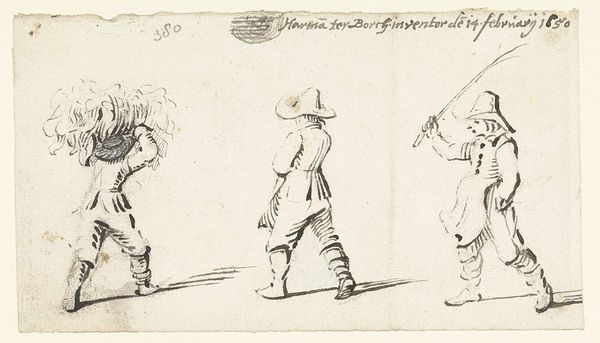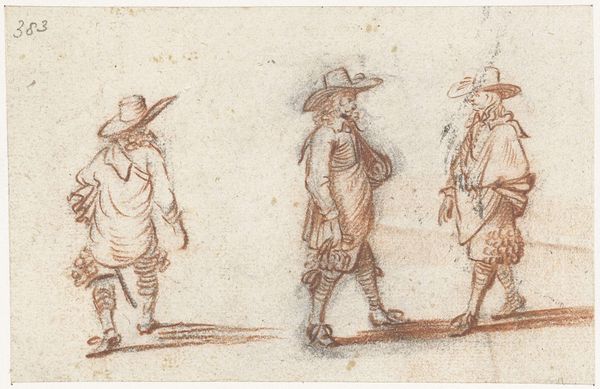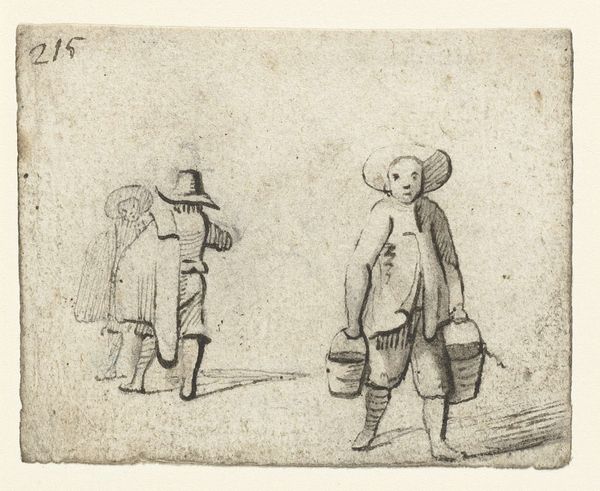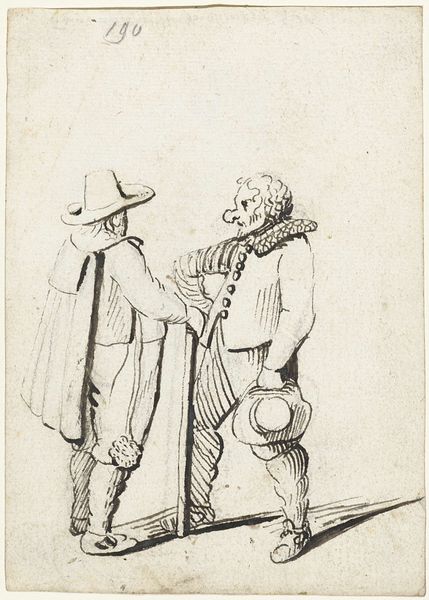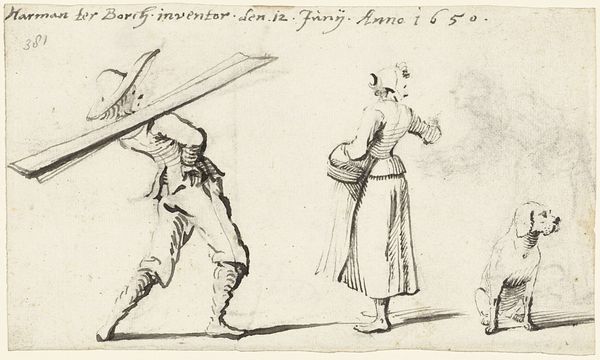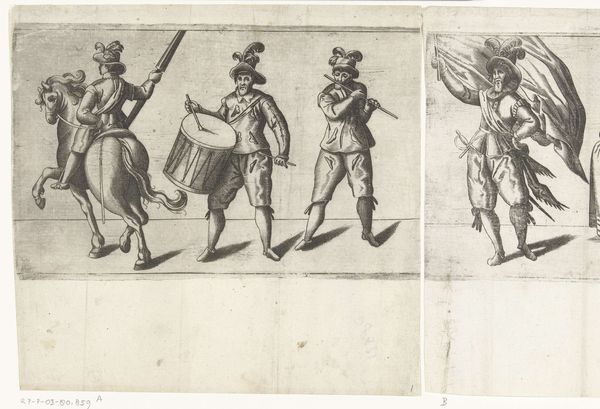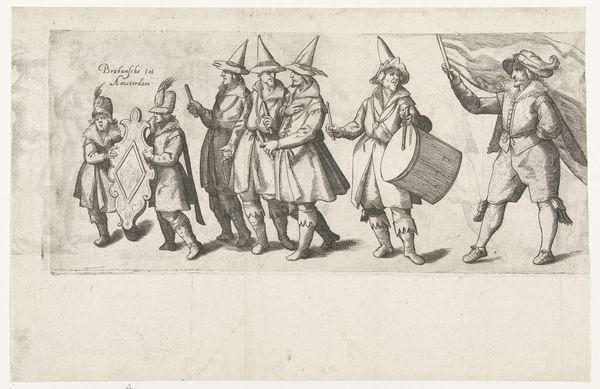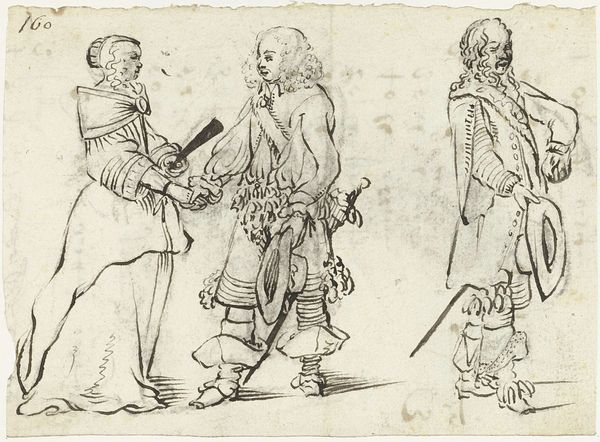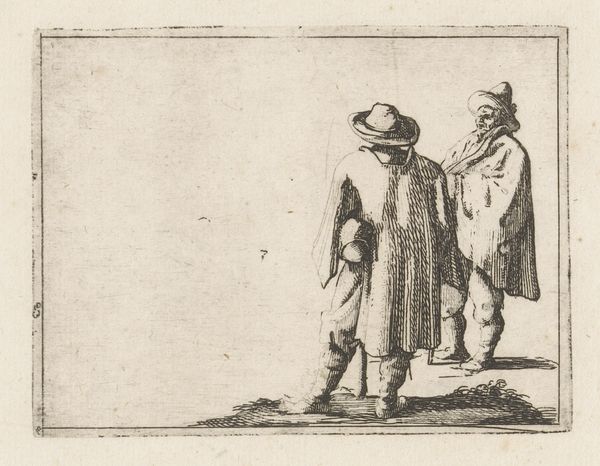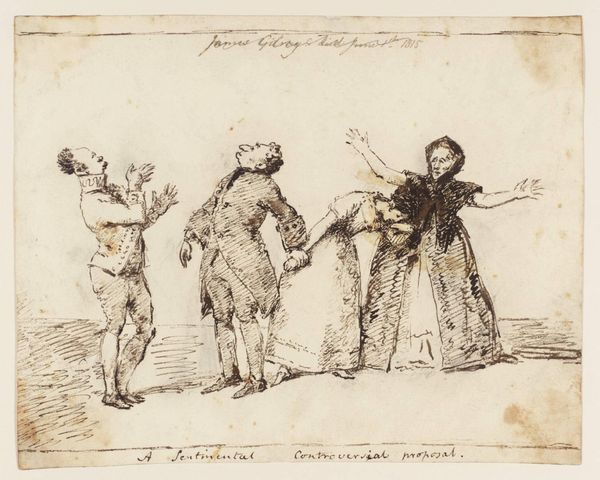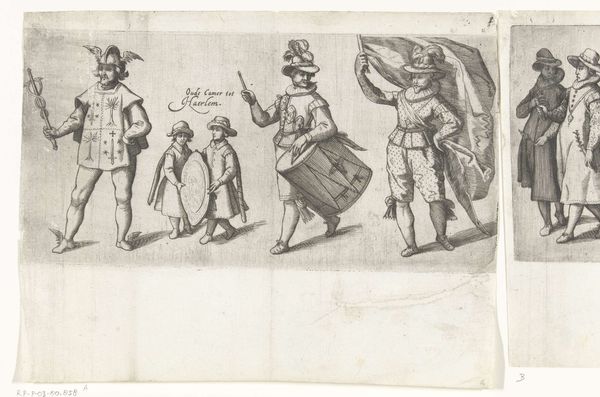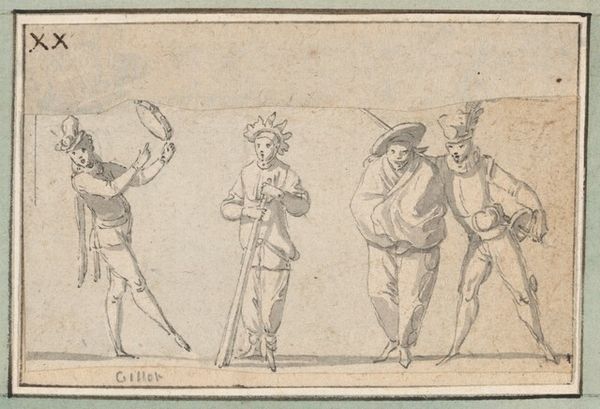
drawing, paper, ink
#
portrait
#
drawing
#
imaginative character sketch
#
light pencil work
#
quirky sketch
#
baroque
#
dutch-golden-age
#
figuration
#
paper
#
personal sketchbook
#
ink
#
idea generation sketch
#
sketchwork
#
line
#
sketchbook drawing
#
genre-painting
#
storyboard and sketchbook work
#
sketchbook art
#
fantasy sketch
Dimensions: height 148 mm, width 173 mm
Copyright: Rijks Museum: Open Domain
Editor: Here we have "Man, a boy and a girl," a pen and ink drawing on paper by Harmen ter Borch from 1650. It strikes me as almost theatrical, these figures frozen in place with very clear lines. What do you make of this grouping, formally speaking? Curator: Indeed. The artist's choice to delineate the figures so distinctly creates a fascinating tension. Consider the stark contrast between the heavily laden figure on the left and the more passively posed girl on the right. Notice the artist's skillful use of line to convey texture and form. What function do the lines serve here beyond representation? Editor: I see the lines defining shape but also contributing to the shading and volume, like with the folds in the girl's dress. The lines even convey weight with the apple carrier and the figure with the jar. It feels functional, in a way. Is there intentional dissonance, like how the middle figure breaks from the other two? Curator: A compelling observation. The middle figure, set apart by his wide-brimmed hat, occupies a liminal space within the composition. It seems the artist orchestrates visual interest. This effect is emphasized by their relationship to one another. The interaction of form here suggests something more than merely figures in space. Editor: You’re right; the lack of narrative makes their poses almost hyper-pronounced. With this understanding, the artist shifts their placement into meaning, right? Curator: Precisely. By isolating line and form, we reveal the image’s capacity for symbolic potentiality. An artist uses semiotics to evoke complex emotions with minimal representation. What might you say is emphasized here? Editor: I now see how each figure, through Ter Borch’s style of hatching and weighting, has a symbolic importance, and each placement means more than initially met the eye. Thanks! Curator: My pleasure. By paying close attention to line and shape, we unearth the true nature of images as vessels ripe for discourse.
Comments
No comments
Be the first to comment and join the conversation on the ultimate creative platform.
